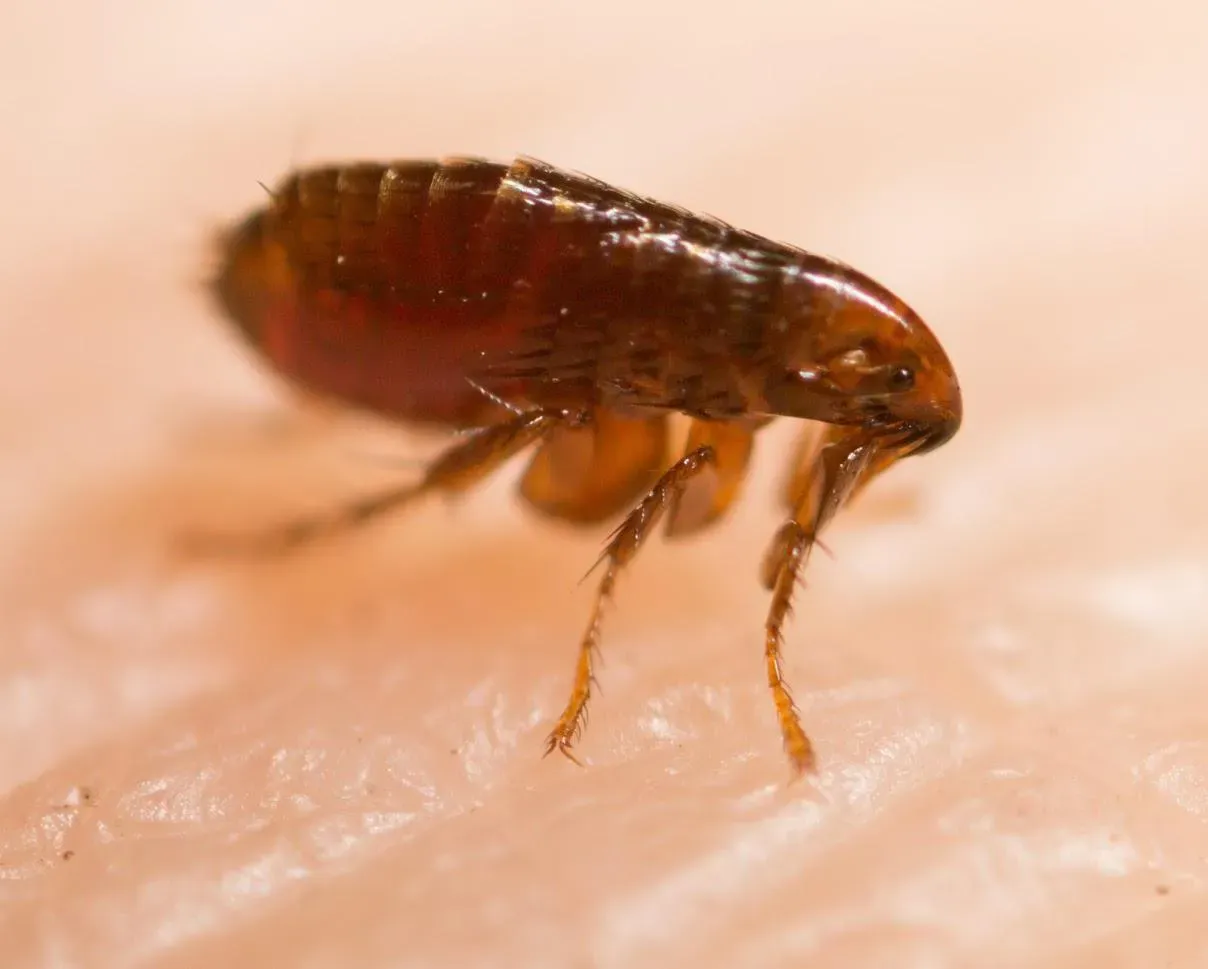Flea Problem? Questions to Ask Before DIY Pest Control

Should you try to treat an indoor flea infestation yourself? If you suspect your home has a flea problem, take a look at what you need to ask before you attempt DIY flea control.
Do You Have a Flea Infestation?
Before you buy sprays or make your own mix of flea repellent, the first step is to learn more about this type of insect invasion. What do you need to know about fleas? These common household pests:
- Can live for one year. According to the ASPCA, the average flea lifespan lasts anywhere from 13 days to 12 months.
- Are dark reddish-brown or gray. A flea is dark red, brown, or gray in color. If you think your home has fleas, but the bugs are black or another color, the culprit is likely another invader. Contact a pest control specialist for an expert identification.
- Are small in size. The average flea is between 1/12- and 1/6-inch in size, according to the National Pest Management Association's (NPMA) PestWorld website.
- Have six legs. Even though you can’t easily get close to a flea, these pests have six tiny legs.
- Bite humans and animals. Do you or your pet have small-sized, itchy, red bumps? These bites are a sign of a potential infestation.
Even though you have clear signs to look for (such as the presence of fleas or bites), some pest infestations are difficult to identify. This is the first problem with DIY pest control. If you treat for the wrong pest, you won't get the desired effect. Instead of a do-it-yourself identification approach, hire an expert exterminator for an initial evaluation.
Do You Know How to Treat for Fleas?
Your home has fleas. You're sure of it. Even though you now know fleas are the culprit behind body bites and itchy animal issues — do you know how to treat for this pest problem?
A DIY pest control treatment can cause more problems than solutions. The top reasons to skip do-it-yourself flea control include:
- Wrong treatment choice. Which pest control treatment or chemical should you use to treat for fleas? While some bug sprays may eliminate ants or roaches, they won't necessarily work on fleas. The same goes for so-called natural or homemade treatments.
- Misapplication. Even if you do choose the right type of chemical or treatment, you can still have an application mishap. According to the National Pesticide Information Center (NPIC), more misapplication reports come from homeowners or renters than pest control professionals.
- Unsafe mixes. Whether the mix is a blend of everyday household cleaners or specially made pest control, don’t combine these types of products.
- Technical skills. Do you have the technical know-how to apply pest control? A novice DIYer typically won't have this type of expert-level knowledge.
- Lack of equipment. Some pest control applications require specialized equipment. If you don't have the equipment necessary, you need a professional to eliminate your home's flea invasion.
- Dispersed flea movement: Perhaps your pet has fleas and you applied pet medication. Fleas will often move from your pet to your home instead.
A qualified professional exterminator has the experience, expertise, and equipment to safely and effectively eliminate a flea infestation. While you might hire a professional to exterminate fleas in your home, a one-time approach to pest control isn't always ideal. Along with the initial service, you may also need to contract a pest control company to provide ongoing treatment.
Can Fleas Come Back After DIY or Professional Treatment?
The fleas are gone and you no longer have to worry about this particular pest problem — or do you? A DIY pest control approach may seem like it works. But in reality, you may have only reduced the number of fleas in your home.
Failure to completely eliminate fleas and their larva can result in a re-infestation. A do-it-yourself treatment may not remove eggs or may miss adult fleas hidden in furniture, on pets, or in your yard. To prevent a re-infestation:
- Discuss regular services with the exterminator. Before you contract a pest control company for an initial flea service, ask the technician about repeat routine maintenance. The technician can create a pest control schedule based on your home's needs and the flea infestation.
- Skip additional DIY methods. Did the fleas return after the exterminator treated your home? Again, this is possible — if you don't schedule routine services. Avoid additional DIY treatments. These may fail or pose a repeated safety risk.
- Follow the contractor's advice. The exterminator may also recommend ways to prevent a flea re-infestation. Follow the professional's advice to protect your home from future pest problems. This may include ways to clean your home or a specific pest control schedule.
A re-infestation doesn't mean the pest control contractor failed. Even though a one-time approach to flea control is ideal, pests aren't always easy to remove from residential structures. A return may mean your pets brought flea hitchhikers back into your home or a new crop of eggs recently hatched. Before you opt for a DIY approach, discuss the possible causes of the re-infestation with the contractor.
Does your home need a flea control service? Contact Paffy's Pest Control for more information. Fleas are part of our 3-Season Home Service Plan!







